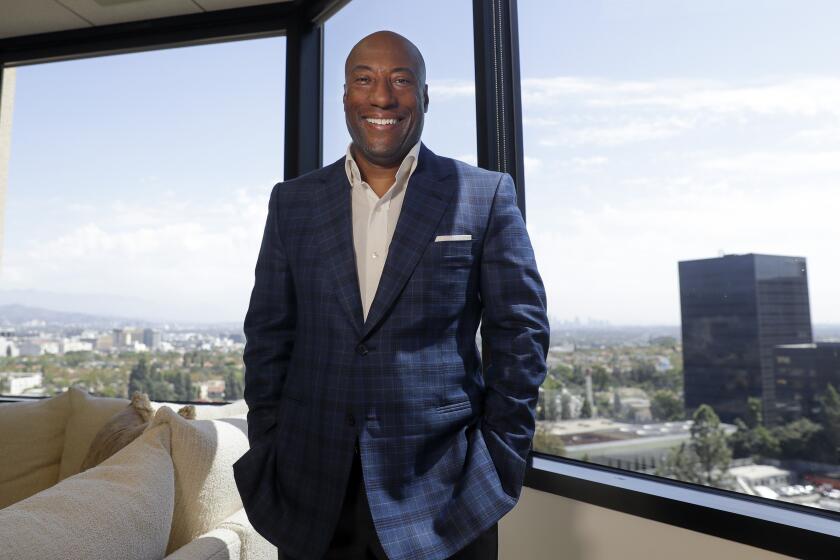Panel Weighs City Risk in Co-Presenting Shows : Thousand Oaks: Theater commissioners will consider the local government’s financial role in wooing big names to Civic Arts Plaza.
- Share via
After three decades of perfectly conventional behavior, the city of Thousand Oaks may soon leap into show biz.
The glittery world of Hollywood and Broadway may seem impossibly distant from the city bureaucracy’s daily routine. After all, how do operatic trills and choreographed frills fit in with the mundane chores of paving roads and treating sewage?
But with the Civic Arts Plaza’s grand opening just six months away, theater boosters think Thousand Oaks is ready for the big time.
The city’s seven theater commissioners will consider Monday whether Thousand Oaks should co-present special attractions in the Civic Arts Plaza, from choral concerts to dance performances to contemporary plays.
The proposition involves some financial risk. But proponents, including most commissioners and council members, say co-presenting will help the city woo big names to the 1,800-seat auditorium.
“I think it’s well worthwhile,” theater commissioner Virginia Davis concluded.
To co-present a show, Thousand Oaks must first negotiate a deal with talent promoters, who have talked about bringing in acts such as magician David Copperfield’s and actor Hal Holbrook’s “Mark Twain Tonight.”
Other possible shows include the Vienna Choir Boys, folk singer Judy Collins and the American Indian Dance Theater.
For any of those gigs, Thousand Oaks would put up one-third to one-half of the performance budget, and the promoter would pay the rest. The city’s stake would consist mainly of in-kind contributions: free use of the auditorium, free use of the stage crews, and free advertising in local papers.
After the performances, the city and promoter would split the box-office profits--or losses.
And therein lies the risk.
The total value of the city’s contributions could easily top $10,000 per performance. To break even, the city would have to sell about half of the auditorium seats at ticket prices ranging from $15 to $30.
Sagging sales could push the city’s theater budget into the red. Hit shows, however, could rake in a hefty profit.
For many, that’s an attractive gamble.
“It’s really not a tremendous risk--we’re basically putting up an empty house,” said commissioner Harry Selvin, a former actor. “And not only is it a low enough risk, we also have an opportunity to get way more revenue.”
Besides the potential profits, co-presenting allows the city to “be more proactive and really get things going,” theater Director Tom Mitze said. Instead of operating the theater solely as a rental facility, the city could actively recruit top performers, he said.
The City Council last fall approved the concept of co-presenting, but did not review the issue in detail. After Monday’s vote, theater commissioners will present the council with a formal recommendation.
Also at Monday’s meeting, the commissioners will discuss new guidelines to evaluate which performers should be allowed to stage shows in the Civic Arts Plaza.
The proposed policy calls for theater director Mitze to review all potential shows “to ensure the safety of the paying audience and public at large and the preservation of property of individuals and the Civic Arts Plaza.”
The commission’s programming committee had originally called for an outright ban on rap and heavy metal music, but withdrew the proposal after some rock ‘n’ roll fans complained.
Rejecting a blanket ban, the revised guidelines recommend that each performance be considered “on a case-by-case basis.”
Because the auditorium is set up as an elegant concert hall, with carpeted aisles and plush seats, several commissioners said they suspect few rock stars would be interested in performing there. And they emphasized that they do not want to host shows that could draw rowdy, unruly crowds.
“I don’t think we want anything that would need added security,” commissioner Davis said. “That’s not what this facility was built for.”
More to Read
The biggest entertainment stories
Get our big stories about Hollywood, film, television, music, arts, culture and more right in your inbox as soon as they publish.
You may occasionally receive promotional content from the Los Angeles Times.










